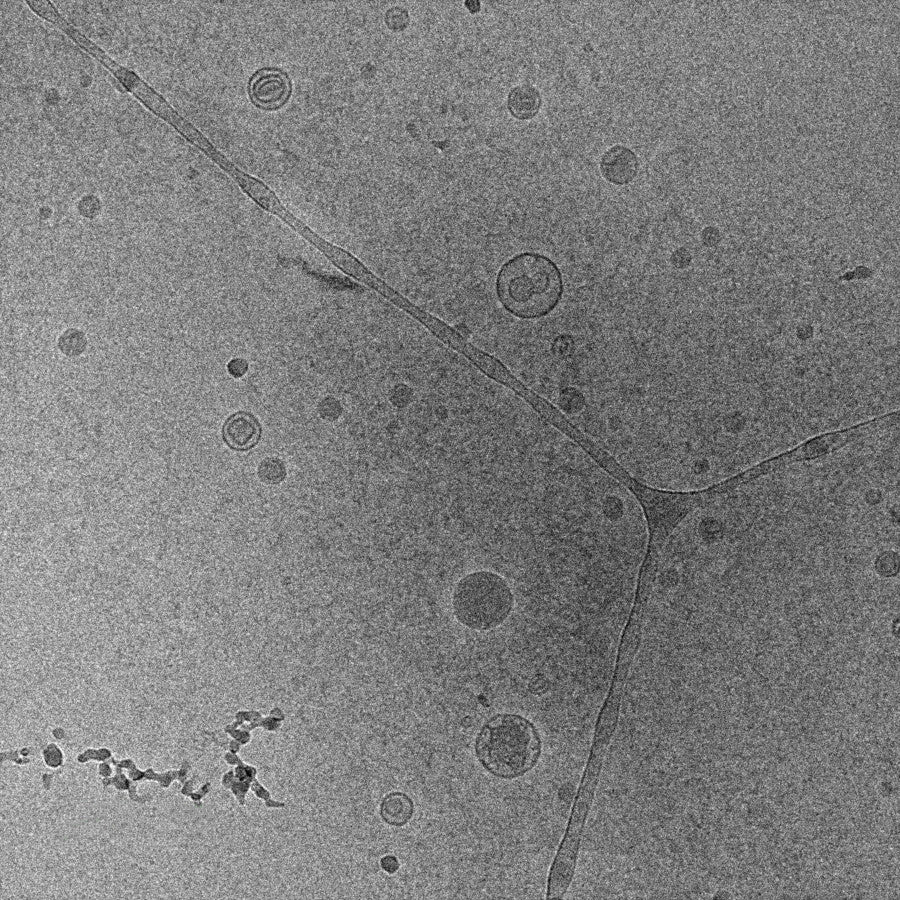
Liposomes Offer Advanced Micronutrient Delivery
Share
What is a liposome?
A liposome is a sphere-shaped transporter that is used by the pharmaceutical and nutraceutical industry to improve the delivery of drugs and nutrients [1]. Liposomes are made up of molecules called phospholipids. Each phospholipid consists of a hydrophilic (water-attracting) head made from a phosphate molecule as well as two hydrophobic (water-repelling) fatty acid tails.
The fatty acid tails connect together at the ends in a zipper-like pattern that creates two layers, referred to as a bilayer. The bilayer has a similar structure to a cell membrane, which is the protective outer layer of the body’s cells. However, liposomes are particularly efficient transporters because they completely encase other compounds, which improves absorption and bioavailability [1, 2]. This unique property makes liposomes favorable for drug or nutrient delivery.
Why is this technology safe and efficient?
During preparation, the water-attracting molecules at the top begin to form the outer layer of the liposome, while the water-repelling tails form the inner surface. Next, the protective bilayer (double layer) begins to encapsulate the active compound (e.g., nutrient or drug). This technology provides an advanced delivery system that increases the bioavailability of active compounds. Bioavailability refers to the amount of a compound that actually reaches the bloodstream during the digestive process [2].
When unencapsulated medications or dietary supplements are taken, stomach acids and enzymes typically break down significant portions of the active ingredients before they enter the bloodstream—decreasing their bioavailability. Conversely, when active ingredients are encapsulated within liposomes, the water-attracting outer layer bypasses the usual absorption and digestion process, allowing much higher concentrations of the active compounds to reach the bloodstream [3]. The ability of liposome encapsulation technology to bypass certain aspects of digestion also accelerates the absorption of the active ingredients, which helps individuals experience health benefits faster.
In addition to their efficiency, liposomes are safe transporters because the body's cells consist of the same type of protective outer layer or cell membrane—making liposomes easily recognizable and well-tolerated by the digestive tract [1-5]. Furthermore, liposomes may be produced from naturally-derived sources such as egg membrane extracts or cholesterol-based fatty acids, which afford liposome encapsulated compounds with benefits that include [1]:
- Structures that are biologically similar to mammalian cell membranes
- Low risk of harmful immune responses after consumption
- A good safety profile due to low innate toxicity
Liposomes also vary in size to improve the convenience of nutrient or drug delivery. Furthermore, product developers can also adjust the size and number of bilayers in a liposome to influence the half-life of the active compounds. Half-life refers to the amount of time it takes for a compound’s initial concentration to be reduced by one-half. This factor is more important for drugs encapsulated in liposomes than nutrients (e.g., vitamins, minerals) as a short half-life means a drug will be excreted from the body quickly, reducing the risk of unwanted side effects [1, 3-5]. This is typically the opposite for dietary supplements, as the longer it circulates before being degraded or excreted, the more health benefits an individual can anticipate.
Overall, clinical research has consistently demonstrated the safety and efficiency of using liposomes to enhance nutrient or drug delivery—making them a more promising compound transporter.
Haroutine offers an exclusive line of supplement products designed with liposome-infused nutrients, including vitamin C—a powerful, clinically proven antioxidant with exceptional versatility.
References
- Akbarzadeh, A., Rezaei-Sadabady, R., et al. Liposome: classification, preparation, and applications. Nanoscale Res Lett. 2013;8(1):102.
- Davis JL, Paris HL, Beals JW, et al. Liposomal-encapsulated Ascorbic Acid: Influence on Vitamin C Bioavailability and Capacity to Protect Against Ischemia–Reperfusion Injury. Nutr Metab Insights. 2016;9:25-30.
- Kraft JC, Freeling JP, Wang Z, Ho RJ. Emerging research and clinical development trends of liposome and lipid nanoparticle drug delivery systems. J Pharm Sci. 2014;103(1):29–52.
- Li, M., Du, C., Guo, N., Teng, Y., Meng, X., Sun, H., Li, S., Yu, P., & Galons, H. (2019). Composition design and medical application of liposomes. Eur J Med Chem. 2019 Feb 15;164:640-653.
- Rogers JA, Anderson KE. The potential of liposomes in oral drug delivery. Crit Rev Ther Drug Carrier Syst. 1998;15(5):421-480.
